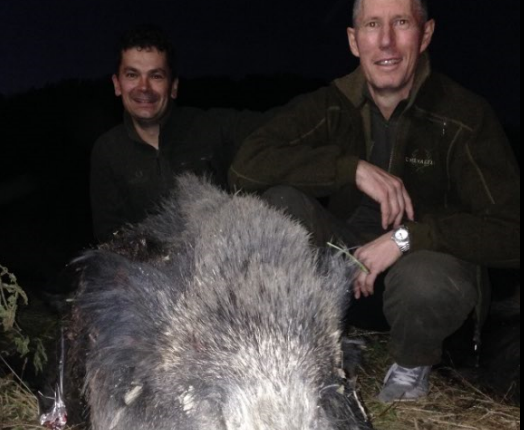
school fees paid getting to the ideal trimming solution
I consider case trimming to be a critical process in reloading; but a process I find the most laborious of all the reloading steps; then I discovered a trimmer that indexes off the shoulder datum of brass. Now trimming is a breeze!
I have included a picture of myself with the different trimming devices I currently have (excludes what I have given away). I used the lathe type approach until discovering WFT (World’s Finest Trimmer) and later Trimit which index of the datum of the brass shoulder. All the equipment trimmed to accurate case lengths, however WFT and Trimit cut the laborious time to trim by a factor of at least 5:1. Best illustrated in a timeline of development.

The reason that you see 2 Forster lathe trimmers is that I needed to buy the Classic Case Trimmer when I started to reload for 500NE (trimming after each resizing is necessary to match case lengths with bullet crimp grooves).
When I had lathe trimming devices I would trim cases when case lengths got close to the maximum length tolerance, but now the process of trimming with WFT or Trimit is that quick that I trim every case after sizing. The advantage of this is that I am assured of equal neck tension due to equal neck lengths and ensure cases that will be crimped match the die setup to bullet crimp groove.

What is the difference between WFT and Trimit? The first WFT model has a fixed die insert; for every calibre family you require a standalone body with fixed die insert. This is the cheapest option if you reload for a single calibre or have calibres in the same family (e.g. 243Win /260Rem /7mm-08 /308Win). My preferred equipment (more expensive) is having this model for each of my calibres’ because I only setup once and never again. I changed away from lathe trimmers because of time to trim which for me includes setup time. This way I am assured of having the same case length from batch to batch year after year.
WFT2 has interchangeable die inserts meaning that you buy the body once and die inserts for the different calibres; cheaper option for loading of more than one calibre. This is fine but you must do the setup every time you change calibres. Trimit1 is identical in function (interchangeable die inserts) with the added benefit of a micrometre setting. I find this useful given the need to change setup when changing calibres and getting back to the same length setting as previously cut for that calibre. This is the reason that The Powder Keg stocks Trimit1 and not WFT2.
Trimit2 is a 3 in 1 process with the added benefit of inside and outside chamfer and deburr; similar to the Forster 3 way cutters which work on their lathe trimmer. Forster 3 way cutters work well but they are only available on a limited number of calibres. The Trimit2 has interchangeable dies but I find the setup a little more sensitive, but then I am technically challenged. If money was no issue and if I was starting without any existing trimming equipment I would buy a Trimit2 for each calibre I reload for. Set-up once and never again with the benefit of chamfer and deburr of case mouths.
It is important that when using case trimmers that index off the shoulder datum that you stick with the same sizing process i.e. if you change from neck sizing to full length sizing or vice versa then you will have the cut length marginally impacted. The picture shows trimmer for a 9.3×62 case, my favourite European calibre; normally I trim outside to avoid the trimmings “mess”.

Cases of uniform length are an important part of good case preparation, now we have the equipment that allows you to trim cases to accurate lengths in quick time. Make the effort in good case preparation and be rewarded with consistent accuracy. Know what matters and focus on what matters – case trimming.




